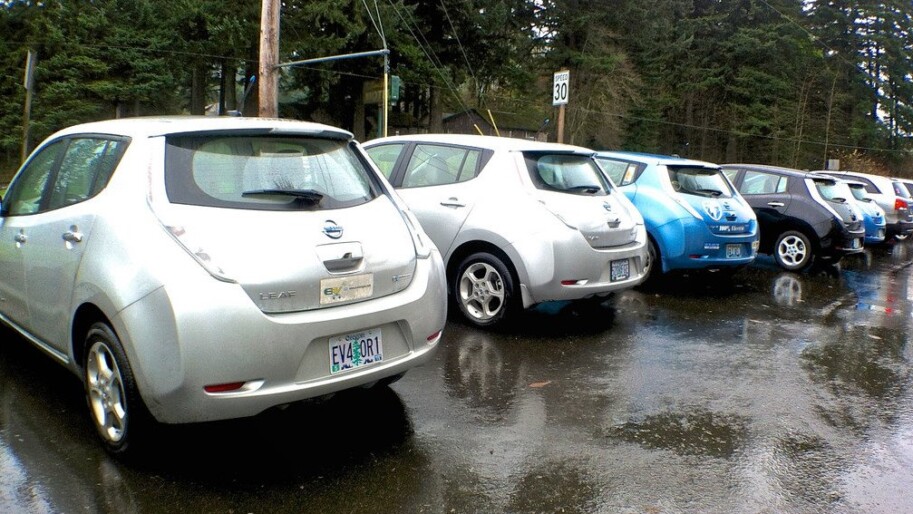Last week, when PG&E shut off power to almost one million customers, many of us were left without heat, refrigeration, internet, light, and other essential functions for days. While some people fired up gas and diesel generators to bridge the power gap, these fossil fuel generators are no treat for neighbors with asthma and other respiratory problems– and they fuel climate change.
There is a better way and it may already be sitting in your driveway.
A half-million Californians already own an electric vehicle, and these machines have the potential to store a lot of energy for use during the kind of emergency we just had.
“Vehicle to Grid” (VTG) charging is what electric vehicle buffs call it, and mark my words– it’s going to come in handy. In this almost-but-not-quite-here Promised Land, millions of electric cars will be connected to the grid via chargers that allow power to flow both ways. At that point, every electric car can serve as an emergency power source for its home or business. VTG systems will also allow customers to save money by “peak-shaving” or drawing energy from the grid only when prices are low, while drawing energy from car batteries when electricity prices are high. You can accomplish the same thing with a stationary battery system in your home or business, although these systems can cost many thousands of dollars to purchase and install.
But power shutoffs are happening now. In rural Sebastopol, our freezer was full of preserved homegrown foods. We could not wait for the VTG chargers of the near future, nor could we afford a Tesla PowerWall. But we did have a Gen 1 Nissan Leaf and a small portable inverter with red and black alligator clips attached.
I asked some knowledgeable friends about this, and they directed me to some online videos that showed me an ingenious hack that helped me save that large freezer full of food, and deepened my already profound love of my electric car.
Here is what I did.
Note: The Climate Center does not endorse or recommend the workaround described below, and is not responsible for any harm or damage caused to person or property.
I connected the inverter to the 12-volt “starter battery” in my EV, in the same way I would connect jumper cables. The inverter converts the 12v in the battery to 120v household current. I then simply plugged in a heavy-duty extension cord into the inverter, and plugged the freezer into that. Voila! In an island of no power, my freezer suddenly came to life.
Of course, you can do this with any 12-volt battery, but it will soon run out of juice. The key is to leave your electric car ON (and in Park, of course), so that the lithium-ion batteries that normally power your car constantly top off the 12v battery, and leave your appliances or other devices running or charged. Brilliant!
Here are some things to know.
- Use an inverter that is rated at least 1000watts. If you use a smaller inverter it may run for a little while, but the draw of a freezer or fridge will soon burn it out, and it will cease to function.
- This is not recommended by any car manufacturer. I repeat: This is NOT recommended by any car manufacturer!
- If you use an extension cord, you must use one rated for high amps, with a three-prong plug and socket. Extension cords are rated using a number called AWG. The lower the number, the beefier the cord. 10AWG is suitable for 20amp device, and would be the best for this purpose.
- Only run the freezer or fridge for a short while at a time, and always while keeping a close eye on it. Do not just “set it and forget it,” in case there are issues. Remember, you are just trying to keep your freezer or fridge cold. If you run it for a couple of hours, then disconnect it, you will help preserve your food as long as you don’t open and close it.
- In over 5 hours of running my freezer from my EV, I used less than 10% of my available energy.
Is this the long term solution to living in a climate-challenged world? Clearly no. The long-term solutions are massive utility reform, the growth of clean and smart community microgrids that can provide local power, and a broad suite of policies to achieve rapid decarbonization to address the climate crisis.
We also need to put an end to the age of the Internal Combustion Engine (ICE). When we all drive electric cars, charged by wind, sun, and geothermal energy, connected to our homes and the grid via smart chargers, we can finally take a nap.
But in the meantime, if you have an electric car, go out and get a 1000w+ inverter, and a heavy-duty extension cord, and you will be much better prepared for the next time your utility chooses to shut off your power.


